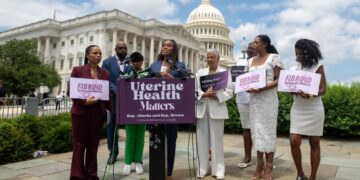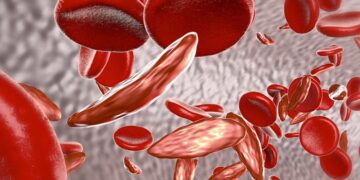Image Source: Henry Ford
July 11, 2024 Story by: Editor
Black breast cancer survivors living in less diverse and socioeconomically disadvantaged neighborhoods are less likely to maintain optimal cardiovascular health (CVH) compared to those in more diverse and affluent areas, according to a study published in JACC: CardioOncology.
Recognizing that various area-level social determinants of health can impact CVH among Black breast cancer survivors, researchers conducted a study involving 713 survivors from the Women’s Circle of Health Follow-Up Study (WCHFS), a cohort based in New Jersey.
The study aimed to explore the neighborhood types where these survivors resided at the time of their diagnosis and to assess their association with poor CVH. The participants were diagnosed with breast cancer between May 2012 and November 2017, and their CVH was evaluated 24 months post-diagnosis. The American Heart Association (AHA) definitions for poor, intermediate, and ideal health components were used to derive CVH scores, with higher scores indicating better CVH.
The study identified four distinct neighborhood archetypes among the Black breast cancer survivors:
Mostly culturally Black and Hispanic/mixed land use archetype (42% of participants): Characterized by a high proportion of Black and Hispanic residents, high densities of food stores (excluding supermarkets), walkable destinations, and religious institutions.
Culturally diverse/mixed land use archetype (16% of participants): Characterized by high neighborhood socioeconomic status (nSES), diverse racial and ethnic groups, a high percentage of non-US born residents, and high densities of food stores, restaurants, physical activity facilities, walkable destinations, and ambulatory care locations.
Mostly culturally Black/green-centric archetype (17% of participants): Characterized by a high proportion of Black residents and high densities of green space and religious institutions.
Culturally diverse/green-centric archetype (25% of participants): Characterized by high nSES, high proportions of White and Asian residents, and green space, with an average of 15.8% Black residents, close to the New Jersey average.
On average, Black breast cancer survivors in this study achieved only half the recommended score for optimal CVH. However, their neighborhood of residence significantly impacted their CVH scores.
Survivors in the mostly culturally Black and Hispanic/mixed land use archetype had the lowest CVH scores and were more likely to have lower education and household income levels than those in the other neighborhood types.
“By identifying these neighborhood-level determinants, tailored policies and interventions can more effectively support the CVH needs of Black [breast cancer] survivors and reduce the burden of cardiovascular disease mortality within this population,” stated the researchers.
Conversely, survivors living in culturally diverse/mixed land use neighborhoods had the highest CVH scores, often accompanied by higher education and household income levels, private health insurance, and a partner. These survivors were three times more likely to have optimal CVH than those in the mostly culturally Black and Hispanic/mixed land use neighborhoods (relative risk ratio: 2.92; 95% CI; 1.58-5.40).
“Our findings underscore the importance of considering neighborhood archetypes, encompassing both social and built environment factors, to identify modifiable neighborhood elements that promote CVH and prevent cardiovascular disease mortality among [breast cancer] survivors,” the researchers concluded. Source: Oncology Nurse Advisorchers concluded. Source: Oncology Nurse Advisor
















